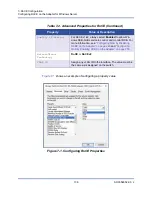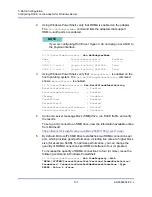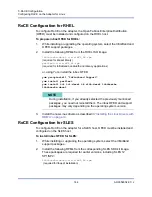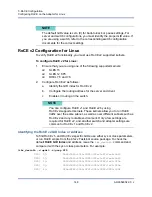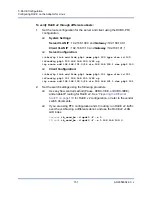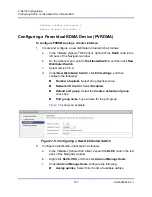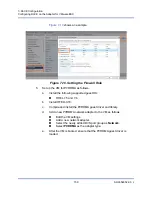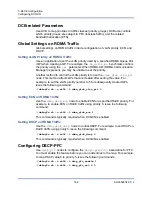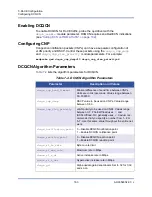
7–RoCE Configuration
Configuring RoCE on the Adapter for Linux
148
AH0054602-00 J
RoCE v2 Configuration for Linux
To verify RoCE v2 functionality, you must use RoCE v2 supported kernels.
To configure RoCE v2 for Linux:
1.
Ensure that you are using one of the following supported kernels:
SLES 15
SLES 12 SP3
RHEL 7.5 and 7.6
2.
Configure RoCE v2 as follows:
a.
Identify the GID index for RoCE v2.
b.
Configure the routing address for the server and client.
c.
Enable L3 routing on the switch.
Identifying the RoCE v2 GID Index or Address
To find RoCE v1- and RoCE v2-specific GIDs, use either sys or class parameters,
or run RoCE scripts from the 41
xxx
FastLinQ source package. To check the
default
RoCE GID Index
and address, issue the
ibv_devinfo
command and
compare it with the sys or class parameters. For example:
#
ibv_devinfo -d qedr0 -v|grep GID
GID[ 0]: fe80:0000:0000:0000:020e:1eff:fec4:1b20
GID[ 1]: fe80:0000:0000:0000:020e:1eff:fec4:1b20
GID[ 2]: 0000:0000:0000:0000:0000:ffff:1e01:010a
GID[ 3]: 0000:0000:0000:0000:0000:ffff:1e01:010a
GID[ 4]: 3ffe:ffff:0000:0f21:0000:0000:0000:0004
NOTE
The default GID value is zero (0) for back-to-back or pause settings. For
server and switch configurations, you must identify the proper GID value. If
you are using a switch, refer to the corresponding switch configuration
documents for the correct settings.
NOTE
You can configure RoCE v1 and RoCE v2 by using
RoCE v2-supported kernels. These kernels allow you to run RoCE
traffic over the same subnet, as well as over different subnets such as
RoCE v2 and any routable environment. Only a few settings are
required for RoCE v2, and all other switch and adapter settings are
common for RoCE v1 and RoCE v2.



